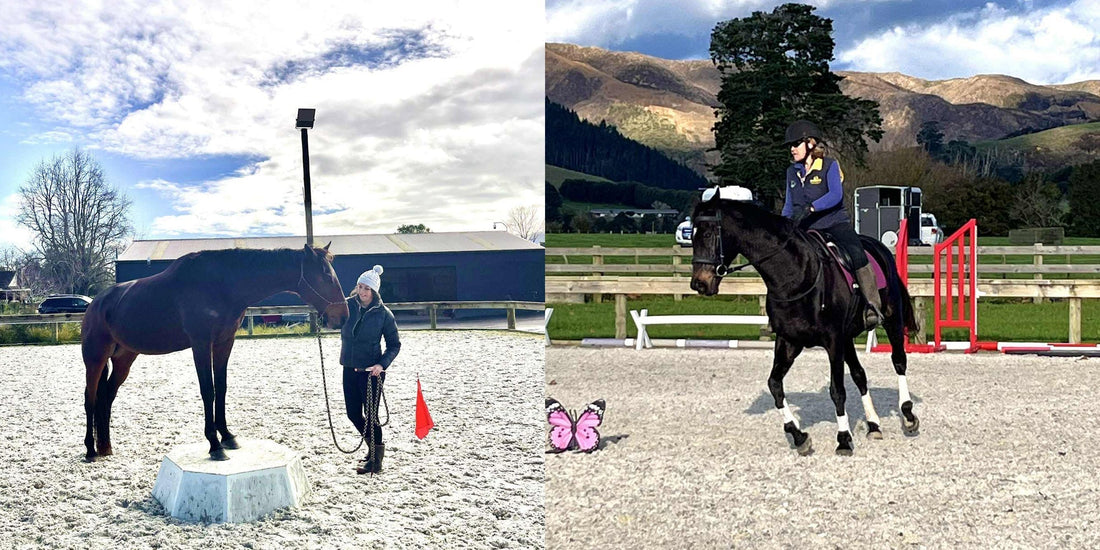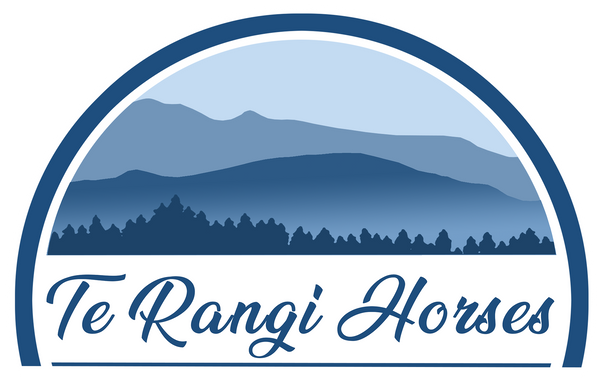
Musings after our June horsemanship clinic
Share
"The horse does one of two things: he does what he thinks he's supposed to do, or he does what he thinks he needs to do to survive." – Ray Hunt
A tumultuous weather week preceded our June Horsemanship Clinic however we were
rewarded with a stunning winter day and a perfect arena at Wairoa Lodge, Clevedon.
I find teaching horsemanship clinics deeply rewarding, as it brings together many of the
things I’m passionate about in horse training. It also feels like the perfect time to reflect on and share some of my thoughts, learnings, and experiences in a blog.
As always, we kicked off with coffee and conversation. This simple ritual gives everyone
space to settle, share their stories, and clarify what they hope to work on. It's always a
reminder of the deep love people have for their horses and the courage it takes to seek
growth, especially when it means facing challenges or stepping outside one’s comfort zone.
The Power of Intention
A key theme of this clinic was intention. Horses are incredibly perceptive—they pick up on
our focus, or lack thereof. In today’s distracted world, it’s easy to be physically present but
mentally scattered. Practicing clear intention and staying present can deeply strengthen the connection and communication between horse and rider.
In recent coaching sessions, I've found that giving riders a clear plan—focusing on intention and attention—greatly boosts their confidence. When riders stay mentally present and purposeful, both they and their horses respond positively.
This might look like:
● Flatwork: Choosing a specific focus such as transitions, lateral movements, or
simple figures like serpentines.
● Poles/jumping: Working on related distances, striding, or bending lines with
cavaletti.
For confidence-building, I’ve worked with riders to incorporate deliberate focus into their
rides. We often begin with a warm-up involving timed transitions—like 8 strides of walk, then 10 strides of trot on a circle in both directions—until horse and rider feel connected. From there, we ride a short, structured sequence of movements. This targeted approach sharpens the rider’s focus, and as a result, horses tend to settle and engage more fully.
Confidence and Clarity
Confidence came up often in our group discussions. Many riders struggle with self-doubt.
I've found that developing a clear plan—focusing on intention and timing—can make a big difference. When riders are mentally present and consistent, horses respond in kind, and confidence grows for both.
I believe confidence is a skill that can be developed. When I feel nervous or challenged, I
find the following techniques can help:
● I visualize a confident rider and try to imitate their posture and presence.
● I shift my focus from distractions to what I can control. In showjumping as an
example, that includes maintaining a quality canter, planning my lines, keeping my
eyes on the groundlines, and counting strides in related distances.
● I manage tension with slow, deep breaths or belly breathing.
● I create a plan, stick to it as best I can, and remind myself it’s okay when things don’t
go perfectly—especially with horses!
Demonstration with Jewel
Thanks to my friend Catriona for lending her mare, Jewel, for the morning demo. Despite
being a little fresh, Jewel showed the building blocks of groundwork beautifully. It reminded us that even seasoned horses need consideration—especially when taken out of their usual environment.
Catriona and Jewel are a great example of true partnership. After undergoing a double knee replacement, Catriona faced a tough road back to full mobility and riding. I know she’d agree that having a strong foundation in groundwork has been essential to her recovery and return to the saddle.
I rely on groundwork when bringing my horses back into work after their end-of-season
break. It’s my go-to for the first few weeks, helping both the horses and me ease back into
training. Groundwork allows for a gradual increase in workload, helps manage freshness,
and encourages bending and stretching to prepare them for ridden work.
Thinking Like a Horse
It’s vital to remember: horses don’t think in terms of right or wrong. They either understand the task—or they don’t. When a horse doesn’t respond as expected, it’s a signal to revisit the clarity of our communication or to revisit training - not to blame the horse.
Anthropomorphism—assigning human traits to horses—can blur this understanding.
Whether it's assuming they “know better” or over-rugging them based on our own comfort, we need to be mindful of their unique needs and instincts.
I don’t claim to be an expert, but this information is accessible to everyone. Simply following @esi_trainer_coach (Equitation Science International) on Instagram can provide daily, science-based reminders about how horses think and learn, and best practices for working with them.
Conditioning and Learning
One of the most powerful ideas I’ve come across is from trainer Andy Booth: a horse feels in control when he knows how to remove pressure. Horses learn through the release of
pressure, so timing is everything. If pressure isn’t released clearly and consistently, it can
lead to confusion and anxiety.
Andy reminds us in his horseman science videos ( obtainable via YouTube and well worth a watch ) that horses have no concept of right or wrong.
“A horse can't decide to do the wrong thing - he doesn't know what that is. And he can't
decide to do the right thing - he doesn't know what that is either. He just responds to - will this be the best situation in my interests or not?” ( Andy Boothe )
Australian horsemanship trainer Andy Boothe explains a horse's capacity to learn and be
trained through the principles of horsemanship science, which focus on how horses think,
feel, and respond to pressure. He emphasizes that horses learn through the release of
pressure—what he calls the "reward moment"—and that timing, clarity, and consistency are key to effective training. Boothe highlights that understanding a horse’s natural instincts and cognitive limitations is essential; horses don’t think like humans, and expecting them to do so leads to confusion and stress. Instead, by applying evidence-based techniques rooted in equitation science, trainers can build trust, reduce conflict, and create clear, fair learning environments where horses can thrive.
In summary
There’s always plenty to work on with our horses, and it takes mindfulness to train in a way that’s both effective and fair. Training horses demands resilience, patience, and empathy.
Like many, I’m constantly striving to be the best I can be for my horses—a rewarding but
challenging journey. Still, we’re incredibly lucky to share our lives with these amazing
animals.
Thank you to everyone who joined our June clinic—it was a privilege to work with you and
your horses to further your partnerships and training.
I’m looking forward to our next horsemanship clinic on Saturday 2nd August, and another day spent with like-minded equestrians, focused on thoughtful training that prioritizes positive partnerships between horse and rider.
